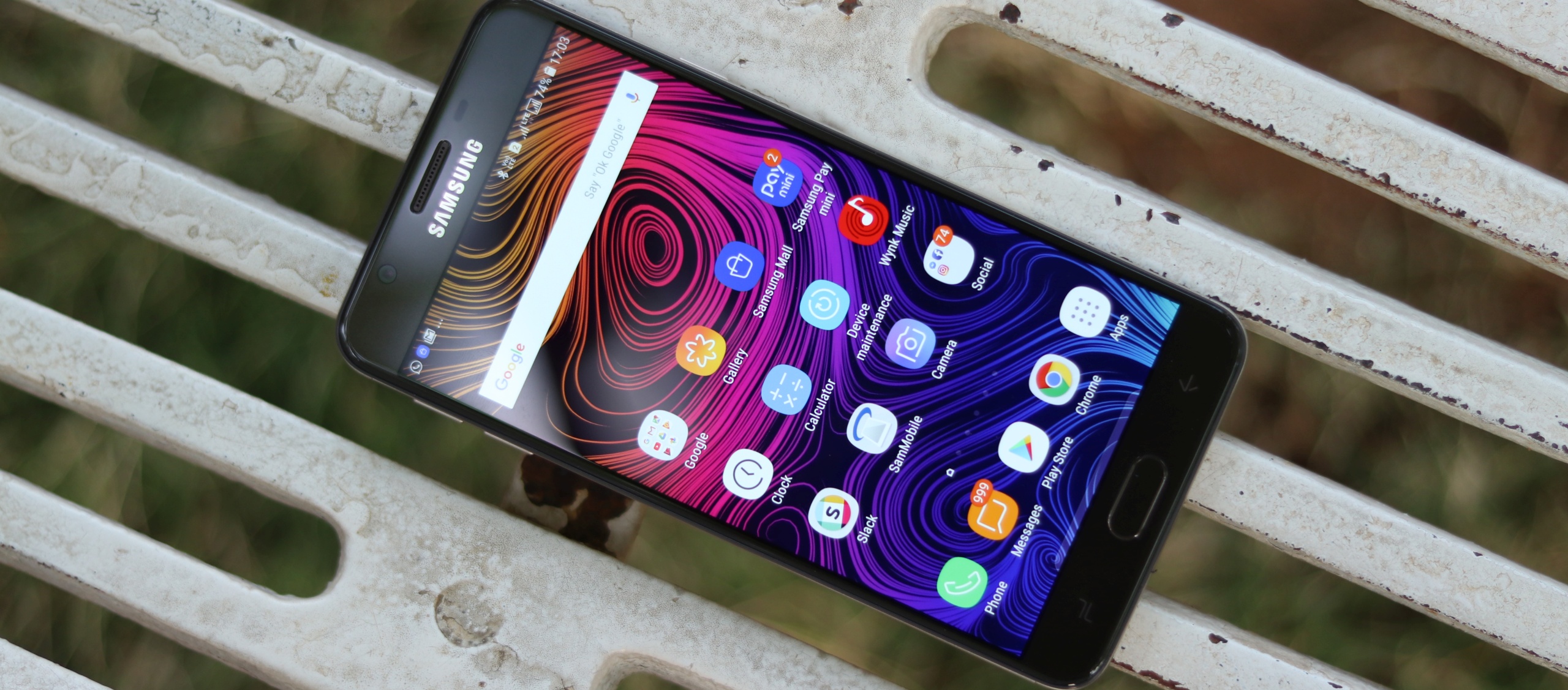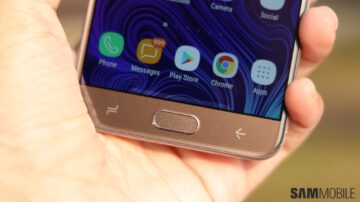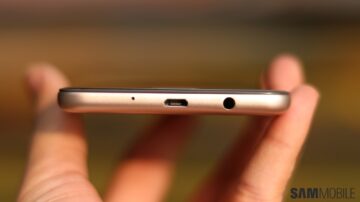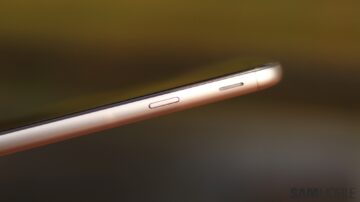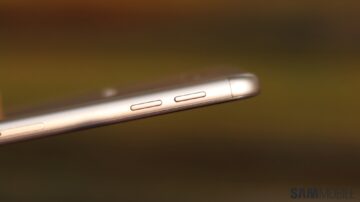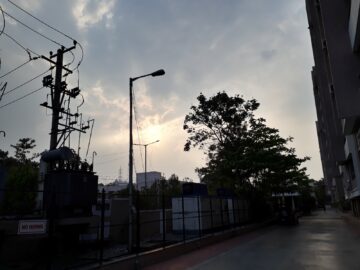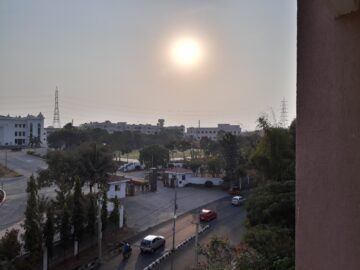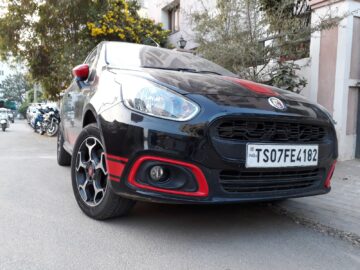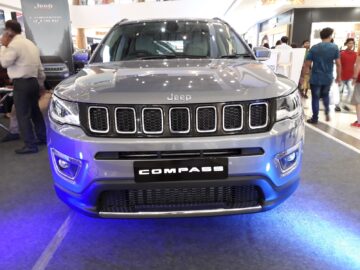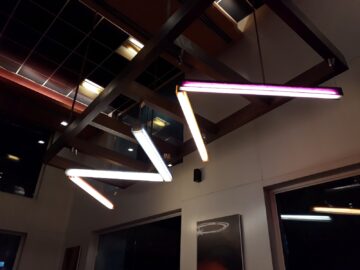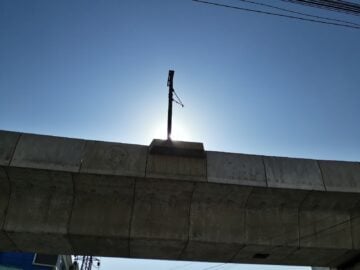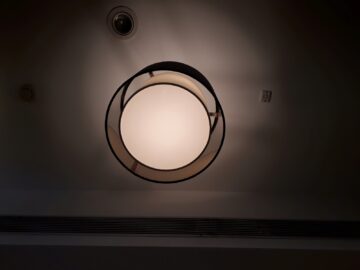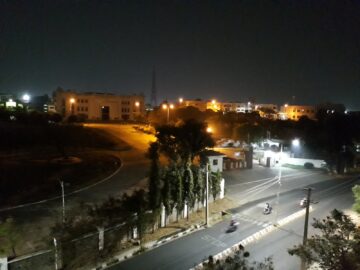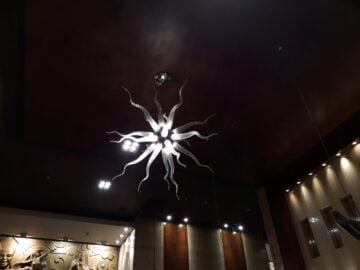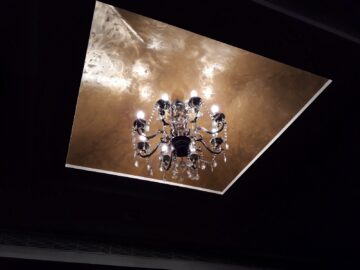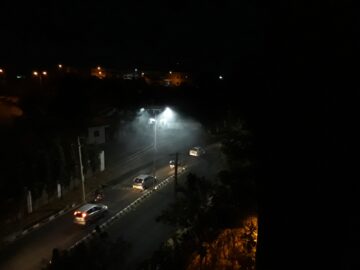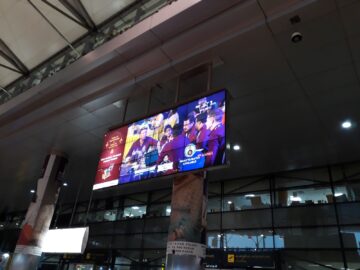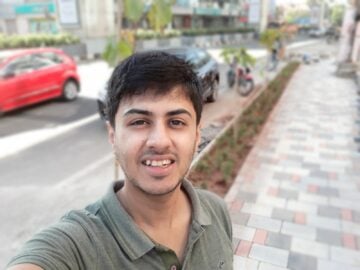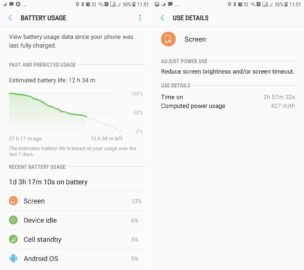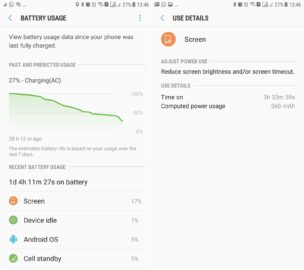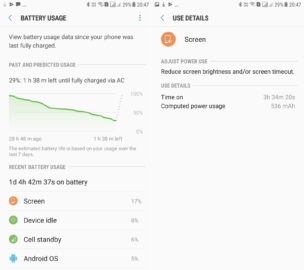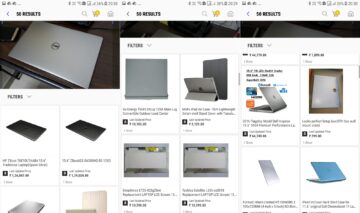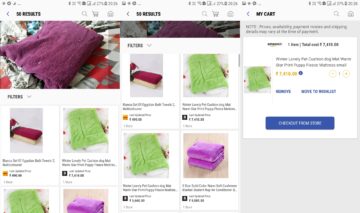With the
Galaxy On7 Prime, Samsung is going after its biggest competitor in India. The company
won't accept it outright, but Xiaomi has probably given Samsung execs in the country many sleepless nights as it has taken over the budget segment of the smartphone market with devices that carry dirt cheap price tags for the kind of hardware they offer. In fact, Xiaomi has also come a long way when it comes to offering after-sales support, and these days, there's pretty much no reason why you wouldn't want to get a Xiaomi smartphone over a Samsung device in the sub-Rs. 20,000 segment in India.
The Korean giant isn't shying away from trying, though. The Galaxy On7 Prime is the company's latest attempt to offer something close to the value-for-money proposition of Xiaomi's budget handsets, and also those offered by many other Chinese OEMs. When you look at the price tag, the On7 Prime certainly has an impressive spec sheet. A Full HD display, 13MP cameras on the front and back, 4GB of RAM, and 64GB of storage at Rs. 14,990 (roughly $230) is nothing to scoff at when you consider Samsung's usual specs-to-price ratio. For Rs. 2,000 ($30) less, you get the same specs but reduced RAM and storage (3GB and 32GB).
The Galaxy On7 Prime also comes with Samsung Mall, an app that lets users point the phone's camera at a product and see related items on various online stores. It's like Bixby Vision, only the Mall app also lets you buy products from various stores without leaving the app. Samsung Mall isn't going to be exclusive to this phone, but Samsung is still using it as a marketing highlight.
How well does Samsung Mall work, though, and does the On7 Prime have what it takes to be a viable alternative in the immensely crowded budget smartphone market in India? Well, let's find out in this review.
Galaxy On7 Prime review: Design
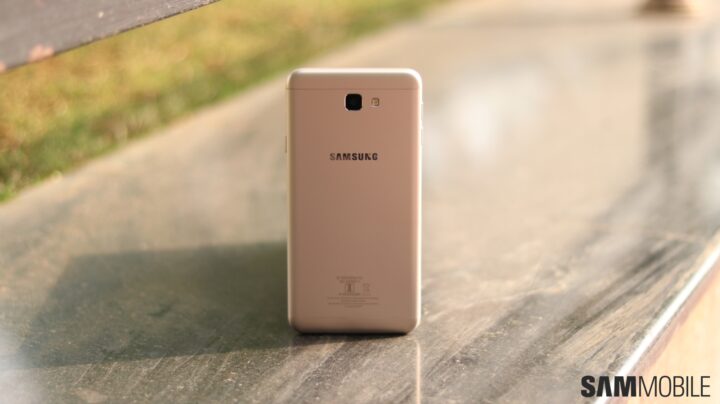
The Galaxy On7 Prime, for the most part, is a rebadged Galaxy J7 Prime. The back of the phone, with its camera placement, is the same as the J7 Prime's. The front, meanwhile, is the same old setup Samsung uses on any phone that doesn't have an Infinity display. What I like is that on our gold review unit, the front side of the phone is colored a deep shade of brown, which looks classy. Where Samsung has cut costs are the capacitive back and recent apps buttons. These aren't backlit, so you might find yourself tapping the back button a couple of times in the dark to make it work.
The phone has a metal unibody design that feels good in the hand. It's not too light, but it's not very heavy, either. The same goes for the phone's thickness. It's rather slim but doesn't skimp on features. You get two SIM slots, a microSD slot, and a 3,300 mAh battery just like the J7 Prime. The home button doubles up as a fingerprint sensor that's always active, so there's no need to press the home button to unlock the phone. Oh, and there's a notification LED as well, a feature that Samsung finally seems to be making a standard across its lineup.
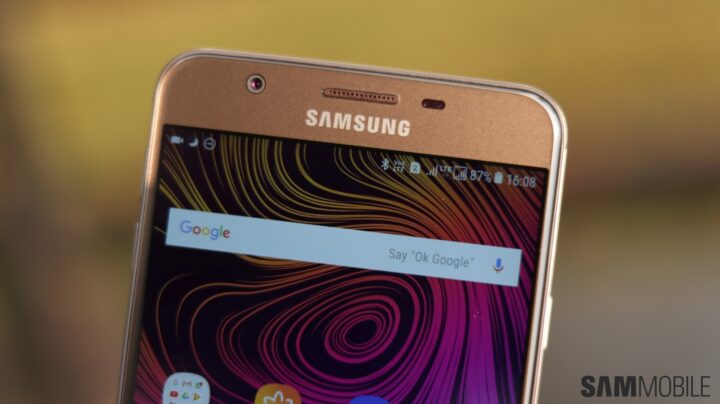
Display

The Galaxy On7 Prime doesn't get an AMOLED display, which, despite the low price tag, is disappointing. The 5.5-inch Full HD LCD screen isn't bad. It's sharp, has fairly vibrant colors, wide viewing angles, and good brightness levels, but it's still an LCD panel that can't match the beauty of an AMOLED panel. There's no ambient light sensor on this phone, either. It's been a long-standing omission on Samsung's budget phones, but in this day and age, it's a major point of contention and utterly inexcusable.
Also odd is the company's decision to omit the blue light filter option, just as it had done on the Galaxy J7 Max, another device that debuted in India. It's a standard software feature on Android these days, and there's no reason other than a half-hearted attempt at putting things together for Samsung India to be leaving the blue light filter out. The display also acts up sometimes and doesn't properly register taps. This was most noticeable when trying to use the phone while it was in my car's mount, and judging by other reviews, it doesn't look like it's a problem limited to my unit.
Camera

I'll come straight to the point here: The 13-megapixel rear and front cameras (F1.9 aperture on both) on the On7 Prime are good when the lighting's right, and too prone to camera shake in other conditions. The camera shake issue is a long-standing one for any non-flagship Samsung phone in recent years, and you have to muster all your will to hold the camera steady enough to get clear pictures indoors and in poor lighting. When the pictures do come out steady, they are pretty good for a budget phone. Daylight pictures, in particular, come out well detailed and noise-free with the rear camera. For pictures against bright light or the skies, the dedicated HDR mode is very useful, even though it requires you to stand still for a second or two till the phone is done saving the HDR image.
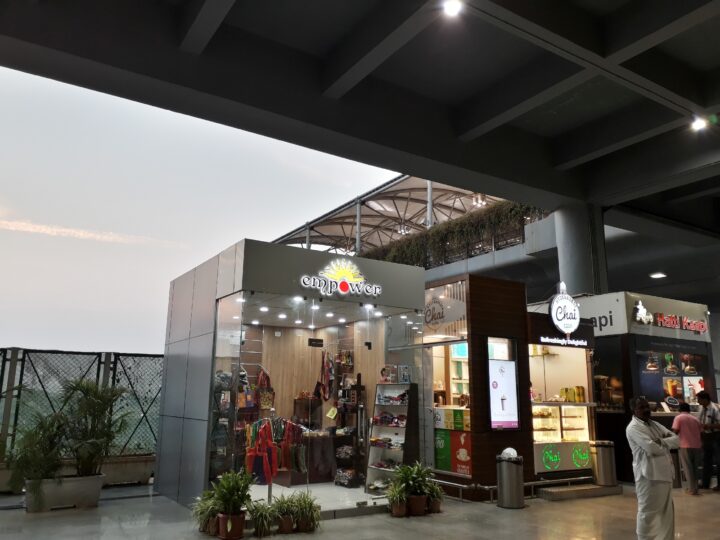
You can get good pictures indoors as well, but again, provided you hold the phone steady enough. Colors aren't very punchy, though, and even HDR photos can't always provide you with enough detail in the dark areas of the scene. For low-light scenes, you can manually reduce the scene's exposure for better shots. There's also a dedicated night mode that can help capture more light than normal, but it almost never produces results that aren't messed up by camera shake. Not that it's surprising that pictures don't come well in the dark, as budget phones are still some ways off from getting high-end imaging sensors, especially when you talk of Samsung's lineup, where every bit of cost-cutting counts.
The selfie camera is a good performer outdoors during the daytime, just like the rear camera. The pictures don't offer as much detail as you'd like from a 13-megapixel camera, but it captures skin tones quite well and produces realistic colors. Performance isn't great in low light, and once again, the result depends on how steady you hold the phone. Sadly, you need an iron grip to get clean selfies in tough lighting conditions, and I failed at that in almost every selfie that I didn't take outdoors on a bright and sunny day.
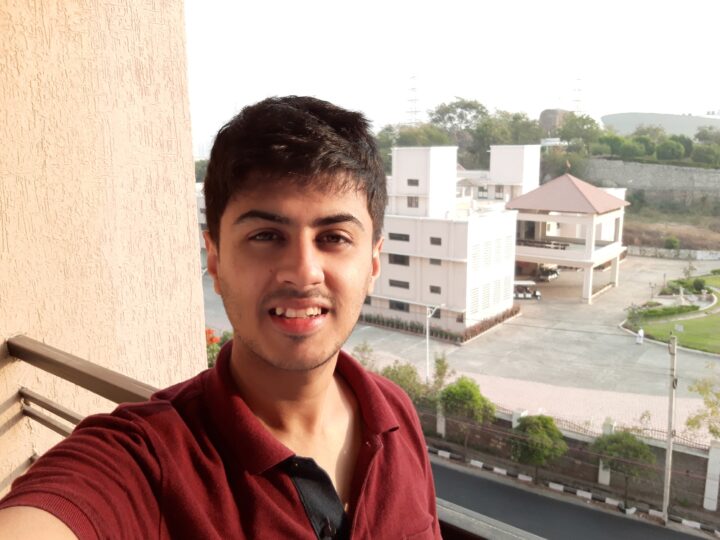
The Galaxy On7 Prime also comes with Selfie focus, a software-based bokeh feature. It doesn't work very well; the phone seems to have issues clearly defining where your head and body end and where the background begins. It's especially bad when you have something big in the background, like the car you can see in one of the samples below. Having multiple people in the scene helps, but only because the camera doesn't have as much of a background to blur in that case.
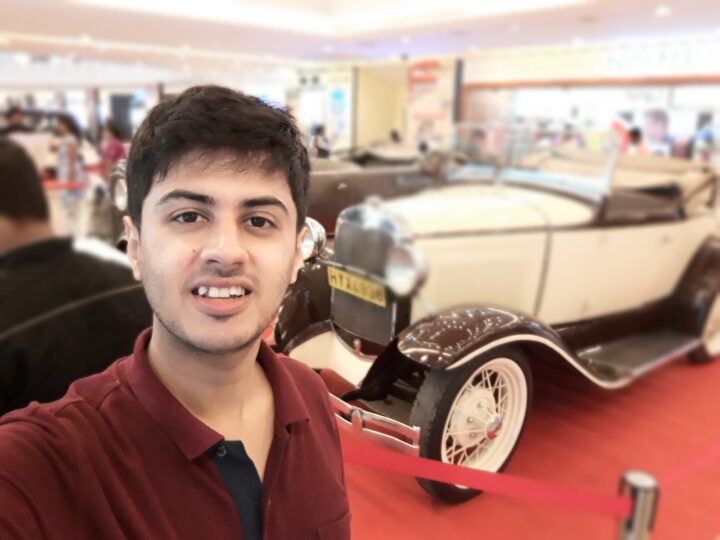
The On7 Prime's cameras have another trick up their sleeve, and that's the social sharing feature. Once you tap the social share button in the camera, you can add contacts from WhatsApp and other social networks. Then, every picture you take gets added to the queue for a particular contact; once you're done taking all the pictures you want to share, you send them across with a single tap. This removes the need to go and select those images from the gallery later on. Not something everyone will use, but if you regularly share pictures with friends and family at events, parties, and elsewhere, it might appeal to you.
Note: The original camera samples can be seen in full resolution in this Google Photos album.
Performance
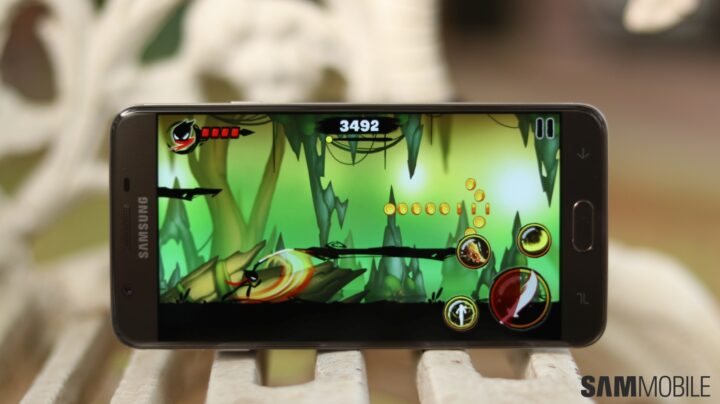
Like any other budget phone from Samsung (or even a mid-range one from a year or so ago), the On7 Prime gets an SoC that's geared solely towards power efficiency instead of performance. The Exynos 7870 has eight Cortex-A53 cores clocked at 1.6GHz. Thankfully, the 4GB of RAM on our review unit helped keep things running smoothly for the most part in day-to-day usage. The hiccups arise when you try to switch between two apps (by double tapping the recent apps key) in a hurry; apps also take some time to open. For example, you'll often see the intro splash screen in Samsung's proprietary apps, like the Phone or Gallery app, before they load. This happens despite the 4GB of RAM, so I'm guessing the processor gets a major part of the blame.
I also ran into some stutter after extended periods of usage, so maybe the RAM management is an issue as well, making me wonder how well the 3GB RAM variant performs. For gaming, don't expect high-end titles to have good frame rates; the Full HD resolution no doubt becomes a bit too much to handle for the processor. As for that fingerprint sensor, it's a hit and miss when it comes to how quickly it responds to your finger when the phone is locked and the screen is off. It can be almost instant at times, but it can also completely miss out on detection and require you to try again on other occasions.
Audio and Call Quality
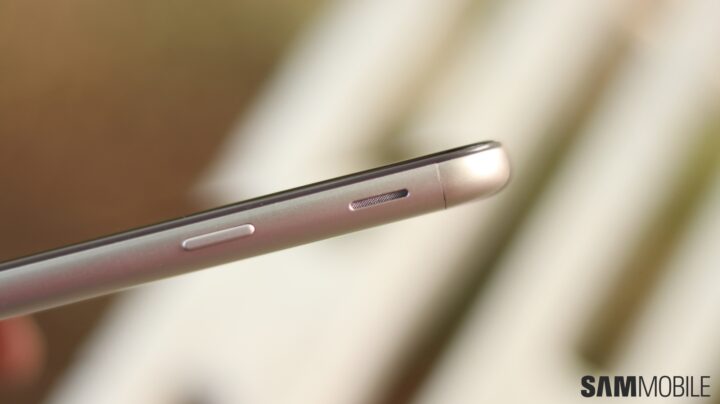
The Galaxy On7 Prime gets a side-mounted loudspeaker, similar to most of Samsung's budget and mid-range phones in recent months, but the company seems to have opted for a lower-quality component for the On7 Prime. The speaker isn't very loud, and it produces tinny sound that, at times, feels distorted even at less than the highest volume levels. That means using earphones with this device is a must, only Samsung decided to not include a pair in the box. Clearly a cost-cutting measure, and while we weren't able to test quality over basic earphones, performance was lacking on the AKG earphones that come bundled with the S8 and Note 8. There's next to no bass, and things sound shrill and uncomfortable unless you're listening to modern tracks with good bit rates.
Call quality was acceptable, with clearly audible voices on both ends of a call. Network reception can be problematic in basements and underground parking lots; the phone seems to continue to hold on to the network in such areas, but calls or mobile data don't actually work. Thankfully, it's not a problem in other areas, and both the first and second SIM get good reception as long as you stay at ground level.
Battery Life
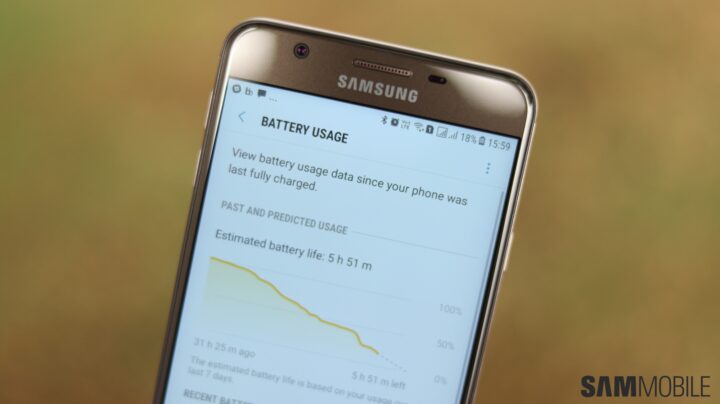
The Galaxy On7 Prime has no issues lasting an entire day and on to the next morning with light to medium usage. Heavy, continuous usage will bring down battery life to less than a day, although getting the phone to drop down to critical battery levels was a rare occasion for me. Of course, navigation via Google Maps and gaming for extended periods can shorten endurance by a few hours, but that's to be expected from the 3,300 mAh battery. Fast charging isn't supported on the Galaxy On7 Prime, and a full top-up from below 10 percent battery takes a little over two hours.
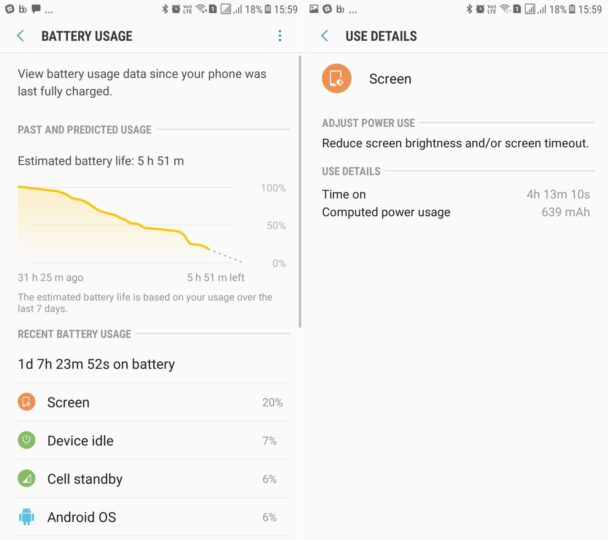
There are a handful of power saving modes built-in, including something called S Power Planning. We saw this feature on the Galaxy J7 Prime, and I'll just point you to its review if you want more details. Basically, S Power Planning can save battery by limiting the phone to only calls or enable call forwarding when battery charge is extremely low. I never found myself needing to use any of these, but coupled with the usually dependable battery life on the J7 Prime, the power saving modes should come handy when you really need to conserve the phone's charge levels.
Software
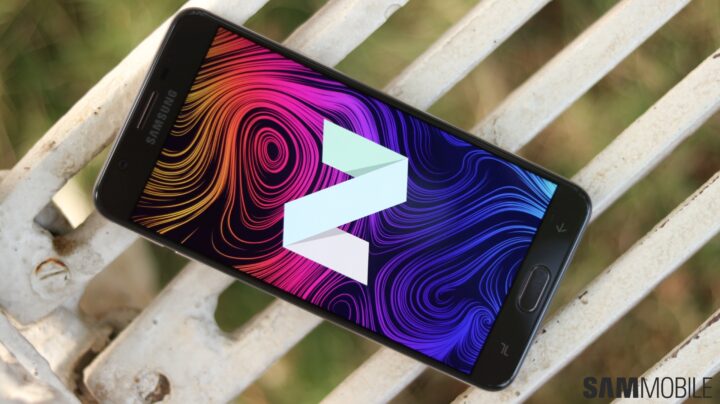
The Galaxy On7 Prime runs Android 7.1.1 Nougat with the Samsung Experience 8.5 UX, the same as the one that you find on the Galaxy Note 8. The features are limited compared to the flagships, but still aplenty. Theme support, Multi Window multitasking, Dual Messenger for using two accounts in apps that don't support multiple accounts, Secure Folder, and Bixby Vision are some of the features you get. The home screen works through swipes: an up or down swipe to go into the app drawer and a swipe to the right to launch Bixby Home. You can also put all app shortcuts on the home screen by disabling the app drawer, which can be useful if you're moving from a smartphone from Xiaomi or another Chinese OEM that doesn't use app drawers.
The phone also comes with Samsung Pay Mini. Samsung Pay Mini only supports wallets such as Paytm and India's Unified Payments Interface (UPI) service, so it's far from useful if you're already using dedicated apps for that. As far as software updates are concerned, I received one update during the review period that didn't seem to change anything, not even the latest security patch (the phone still runs the August security patch). It remains to be seen if Samsung will bring Oreo to the On7 Prime. If it does, it's likely to take a long time; Android P will probably be out by then.
Samsung Mall
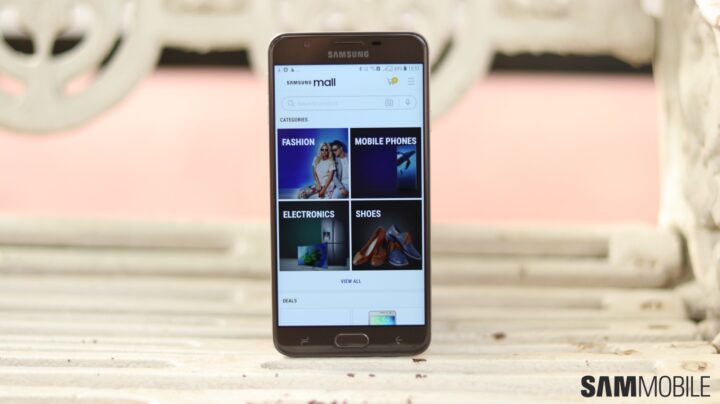
Samsung Mall is a headline feature of the Galaxy On7 Prime, though it's not limited to this device and will run on other phones as well. The app is a take on Bixby Vision and goes one step further. Samsung Mall lets you add items to a cart and purchase them from various online stores, such as Amazon, Flipkart, Jabong, and Tata Cliq, without leaving the app. But, the checkout process is a bit long-winded. For each item you add, you must go through the store's webpage through the built-in browser, log in to that store if you have an account (a must if you want to use Amazon Prime, for example), make the payment, then repeat the entire process for a product from another store.
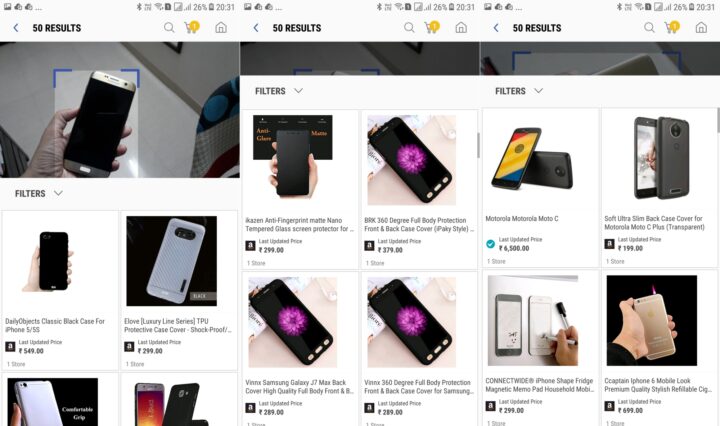
Samsung Mall also lets you take pictures of items and see related products online (in addition to using voice search), but it's a hit-and-miss affair. Taking a photo of a pillow shows results for blankets and towels, which is fairly acceptable, but take a photo of the Galaxy S7 edge and Samsung Mall will throw up results for a Motorola phone and cases for other devices. Trying to see results for laptops seemed to work well, although unnecessary results still show up.
The primary benefit I saw with Samsung Mall is that it regularly threw up voucher codes for various stores as notifications and also curates deals on the main landing page. The visual search through the camera might improve later on, but as it stands right now, you're better off using dedicated shopping apps for each store.
Conclusion
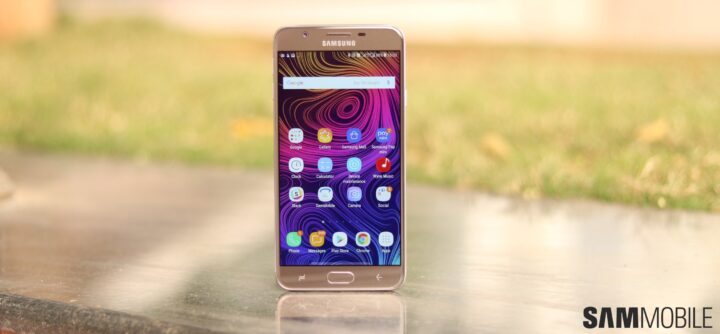
I'll be honest: The Galaxy On7 Prime isn't a great budget phone, even if it's Samsung's best budget phone yet for the asking price. But there isn't anything that stands out in particular. What does stand out is the fact that there's still no ambient light sensor, or that the phone isn't powerful enough to run high-end games. The cameras are good in natural light but produce blurry images in other conditions, and the audio quality leaves much to be desired. The battery life is great, but that's not a unique feature in this day and age.
If your budget is limited to Rs. 15,000, and you must have a Samsung phone, the On7 Prime is okay. But if your allegiances don't lie with a particular company, you have alternatives like the Xiaomi Mi A1, which runs Android One and therefore gets direct updates from Google. It also has a better spec sheet, although the software features pale in comparison to Samsung's offering. But Xiaomi has a good alternative in that case as well: The Redmi Note 4 costs much less and runs MIUI, which is as feature-packed as the Samsung Experience UX.
If you can increase your budget, the Galaxy J7 Max is a better option, even though it doesn't have the best software performance. For slightly more money, you can also opt for the Galaxy J7 Pro, which is a complete package that includes an AMOLED display and the full-fledged version of Samsung Pay. Again, if you can't modify your budget, you could do worse than the Galaxy On7 Prime. But you could also do much better, so make sure to take a look at all options before spending your hard-earned money.
| Pros |
Cons |
| Sharp, fairly vibrant LCD display |
AMOLED display sorely missed |
| Cameras do well outdoors |
No auto brightness |
| Above average day-to-day performance |
Cameras struggle in tough lighting conditions |
| Great battery life |
Not powerful enough for demanding tasks/gaming |
| 4GB RAM, 64GB storage on a budget |
No blue light filter |
| Premium metal design, notification LED |
Samsung Mall needs work |
| Samsung Mall is a neat idea |
|
 Samsung Galaxy Watch 8 review
Samsung Galaxy Watch 8 review Samsung Bespoke AI Jet Ultra review
Samsung Bespoke AI Jet Ultra review Samsung Galaxy Z Fold 7 review
Samsung Galaxy Z Fold 7 review Samsung Galaxy Z Flip 7 review
Samsung Galaxy Z Flip 7 review Samsung Galaxy S25 Edge review
Samsung Galaxy S25 Edge review Samsung S95F OLED TV review
Samsung S95F OLED TV review Samsung Q7F QLED TV review: A no-brainer purchase at its low price
Samsung Q7F QLED TV review: A no-brainer purchase at its low price Samsung S90F OLED TV review: Unreal value for money
Samsung S90F OLED TV review: Unreal value for money Samsung Galaxy S25+ review: Nails the big phone basics
Samsung Galaxy S25+ review: Nails the big phone basics





